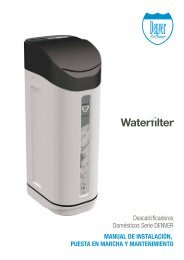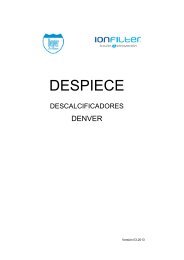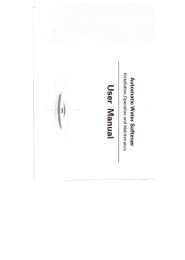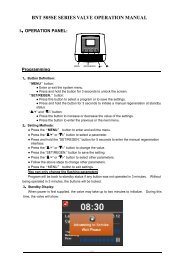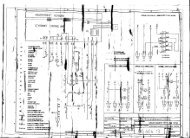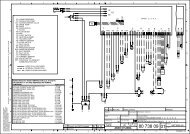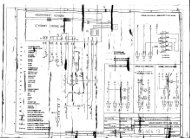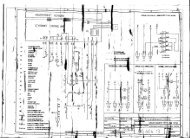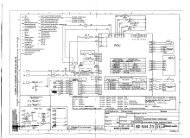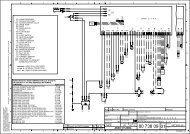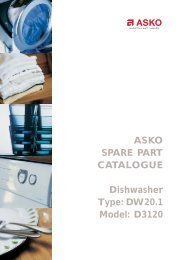Service%20Manual%20DW20%20EN
Create successful ePaper yourself
Turn your PDF publications into a flip-book with our unique Google optimized e-Paper software.
TROUBLESHOOTING<br />
6. Troubleshooting<br />
If there are problems with poor washing results, you<br />
must observe the following rules in the first instance:<br />
• Use a suitable programme, such as Normal<br />
programme 55°C/60°C for normally soiled<br />
items. After week 16 2005, 55°C/65°C<br />
Australia: 45°C/50°C. Not DW20.C, which<br />
has a temperature of 55°C for a normal<br />
program and Sani A (B).<br />
• If more heavily soiled items are to be<br />
washed, e.g. saucepans or gratin dishes,<br />
select a stronger programme, such as<br />
Heavy wash or Intensive wash.<br />
• It is important to use a suitable detergent,<br />
preferably one which has produced good<br />
results in tests.<br />
• You should not buy a bulk pack, because<br />
detergent is a perishable product. The<br />
detergent dose must also conform to the<br />
recommendations on the pack. Above all,<br />
avoid overdosing.<br />
• In machines fitted with a water softener, set<br />
the dispenser for soft water.<br />
• The spray arms must not be obstructed and<br />
they must rotate at the correct speed (12 -<br />
25 r/min). Make sure that the machine takes<br />
in the correct quantity of water; see the<br />
user handbook.<br />
6.1 Most common faults<br />
If the dishwasher does not work, you should first<br />
check whether this may be due to a simple fault<br />
which the customer himself can correct. Identify<br />
the fault with the help of the following questions.<br />
Machine will not start<br />
• Are the fuses intact?<br />
• Is the machine connected to the mains?<br />
• Is the door properly closed?<br />
• Is the water tap open?<br />
If you have answered “YES” to the above<br />
questions, and if the machine appears to be<br />
without a power supply, you should first check<br />
that a power supply is present as far as the main<br />
switch and as far as the control unit.<br />
If the machine indicates that something is wrong,<br />
e.g. “Open door” even though the door is closed,<br />
check the door switch.<br />
If the machine indicates “Overfilling”, check the<br />
overfilling system (microswitch, hoses, etc.)<br />
Water remains in the machine<br />
• Is there a blockage in the drain hose?<br />
Check the connection at the union with the<br />
building’s drains.<br />
• Is there a kink in the drain hose?<br />
• Are the filters blocked?<br />
• Is the drain pump blocked?<br />
• Is the gauge block on the left in the sump<br />
next to the drain pump incorrectly seated?<br />
If you have answered “NO” to the above questions,<br />
first check that the drain pump has a power supply<br />
and that it is working. The pump must be replaced if<br />
it is faulty. If there is no power supply to the pump,<br />
check the output from the control unit. Replace the<br />
control unit if it is defective.<br />
The dishwasher is not clean<br />
• Are the spray arms able to move freely?<br />
• Are the holes in the spray arms free from dirt?<br />
• Is the detergent being dispensed correctly?<br />
Check that you are dispensing according to<br />
the hardness of the water.<br />
• Is the fine filter securely attached?<br />
• Are you using the correct wash programme?<br />
• Is the machine correctly loaded?<br />
40




